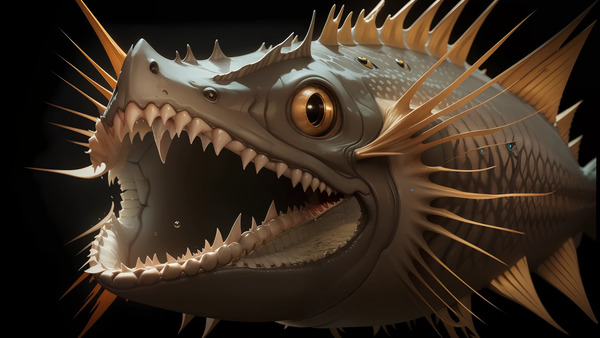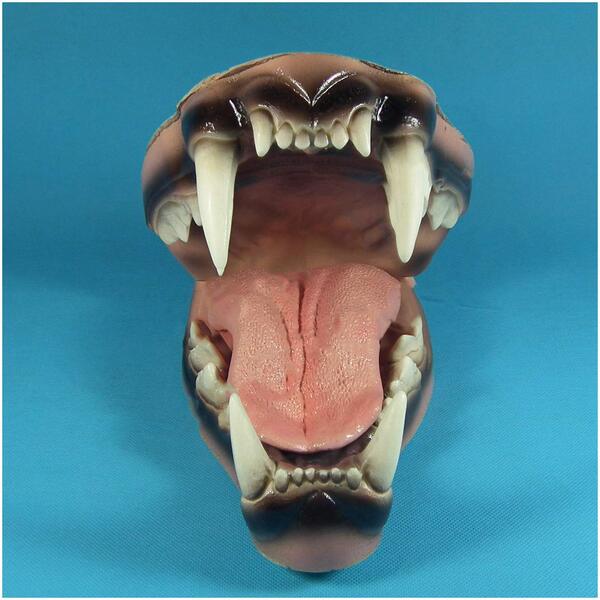When it comes to teeth, humans have it rough: we only get two sets in a lifetime, and losing them can mean expensive dental care. But in the animal kingdom, many creatures have an incredible ability to regrow their teeth, a trait that seems almost magical from a human perspective. This article explores the fascinating world of dental regeneration, answering common questions and shedding light on animals that can grow new teeth over and over again.

The ability to regrow teeth is called polyphyodonty, and it's most commonly found in reptiles, fish, and some amphibians. Unlike humans, who are diphyodont (with just two sets of teeth), many animals can replace their teeth multiple times throughout their lives.
Sharks are perhaps the most famous tooth-regrowing animals.
A single shark can lose up to 30,000 teeth in its lifetime!
They replace teeth as frequently as every two weeks, ensuring they’re always ready for the next meal.
This incredible ability helps them maintain their deadly bite and survive as apex predators in the ocean.
Crocodiles have a similar but less frequent system. They can regrow teeth about 50 times in their lifetime.
Some lizards, like the monitor lizard, can also regenerate teeth as part of their adaptation for catching prey.
Many fish species, such as piranhas and catfish, can regenerate their teeth throughout their lives.
The parrotfish is a notable example, using its strong, continuously regrowing teeth to scrape algae off coral reefs.
Amphibians like salamanders are less known for their dental regeneration, but they can grow back lost teeth.
Interestingly, salamanders can also regrow other body parts, such as limbs and tails, making them true regeneration experts.
Most mammals, including humans, have two sets of teeth: baby teeth and adult teeth. However, there are some exceptions:
Elephants replace their molars several times throughout their lives.
Manatees have a conveyor-belt system, where new teeth grow at the back of their jaw and gradually push forward to replace old ones.
Rodents like rats and rabbits don’t replace teeth but have continuously growing incisors that must be worn down by chewing.
Humans are diphyodont, meaning we get only two sets of teeth. Evolutionary pressures likely favored a system where our teeth became stronger and more durable rather than constantly regenerating. While this has benefits, it also makes us dependent on dental care when things go wrong.
The process of tooth regeneration in animals involves stem cells located in the dental lamina, a tissue that helps grow new teeth. In polyphyodont animals, this tissue remains active throughout their lives.
Scientists are studying these processes to develop treatments for humans. Research into shark and alligator genomes has revealed genes and mechanisms that could one day allow humans to regrow teeth.
In the wild, losing teeth can mean starvation or vulnerability. For predators like sharks and crocodiles, regrowing teeth ensures their hunting efficiency. For herbivores like Elephants-Are-Endangered.html">elephants, it allows them to continue processing large amounts of vegetation.
Sharks can replace their teeth indefinitely, with some species losing and regrowing teeth as often as every two weeks.
While frogs don’t typically regrow teeth, other amphibians, like salamanders, can.
Currently, humans can’t naturally regrow teeth. However, research in dental regeneration is promising, and future treatments might mimic the abilities of animals.

Sharks
Crocodiles
Lizards
Parrotfish
Salamanders
These animals benefit greatly from their tooth-replacement systems, which provide them with a significant edge in survival.
Studying tooth regeneration in animals not only deepens our understanding of biology but also inspires advancements in human health. For instance:
Dental treatments could one day allow us to grow new teeth.
Understanding these mechanisms helps with treating diseases like osteoporosis and stem cell disorders.
The ability to regrow teeth is one of nature’s most fascinating adaptations. From the endless rows of shark teeth to the unique dental systems of Elephants-Are-Endangered.html">elephants and manatees, these abilities highlight the diversity and ingenuity of the animal kingdom. While humans may not have this superpower, ongoing research inspired by animals might bring us closer to tooth regeneration in the future.
If you’ve ever wondered about tooth regeneration, the animal kingdom has plenty of examples to marvel at—each one showing just how extraordinary life on Earth can be!
We created this article in conjunction with AI technology, then made sure it was fact-checked and edited by a Animals Top editor.